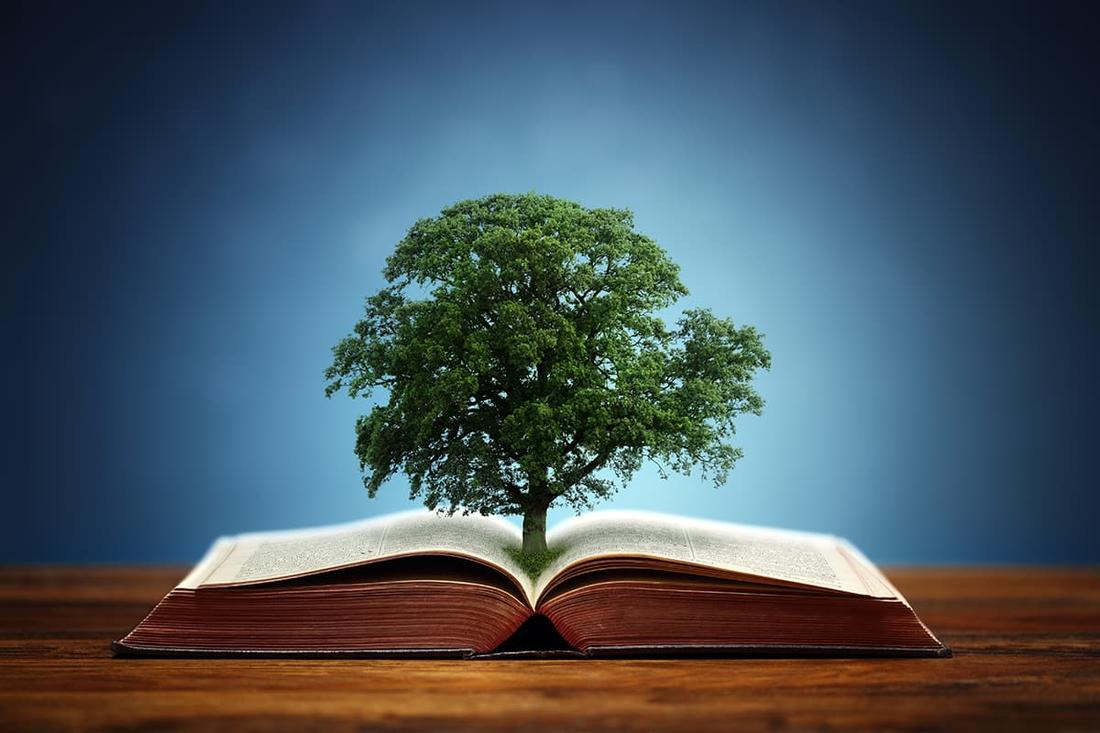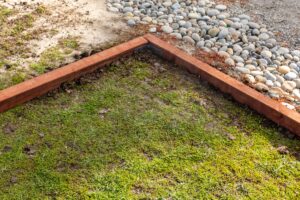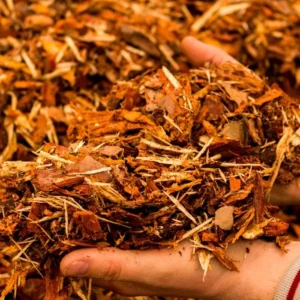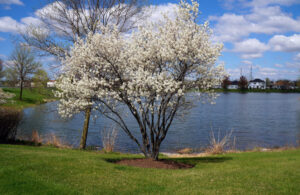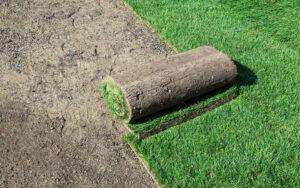The tree leaf calculator helps estimate the number of leaves on your tree. While this is just an approximation, it provides a sense of scale regarding the number of leaves. Have you ever wondered how many leaves cover your big oak tree? Could it be 10,000, 100,000, or even 1 million? In the following sections, we’ll guide you through simple steps to estimate the leaf count on a tree.
Tree Leaves Calculator
Autumn is a transitional season, starting in September in the Northern Hemisphere and March in the Southern Hemisphere. During this time, nature undergoes a vibrant transformation. Trees in forests and along park paths shift from green to shades of yellow, orange, red, brown, and even purple. As thousands of leaves begin to fall, they form blankets on the ground, prompting us to reach for rakes to tidy our yards. But how many leaves actually make up those piles? How many bags will you need to collect them? Our tree leaf calculator can help you figure that out!
Have you ever thought about why such dramatic changes occur in nature toward the end of the year? Surprisingly, the autumn transformation is not as complex as it seems. Leaves are essential to trees for energy production during most of the year, but when winter approaches, trees must shed their leaves. This is because leaves contain chlorophyll, the chemical responsible for photosynthesis and their green color. As the chlorophyll breaks down, the leaves’ “true” colors—red, orange, and yellow—are revealed. To learn more about the science behind autumn, keep reading the article below.
How many leaves are on a tree?
If you’re curious about how many leaves are on a tree, you could try counting each one individually. But we warn you, it’s a bit like counting stars in the night sky—it’s difficult, tedious, and very time-consuming. Instead, you can use our tree leaves calculator to make a quick estimate in just 5 simple steps:
First, take a round paper plate and cover it with a single layer of leaves from the tree you’re examining. Try to avoid any gaps or overlapping leaves. This part can be tricky, especially with dry or fragile leaves, but it helps to use both large and small leaves to improve accuracy. Once done, count the leaves on the plate. Measure the diameter of the plate and input it into the tree leaves calculator. You’ve now calculated the number of leaves that can cover a specific area, which is called the area density of leaves.
area density = no. leaves on plate / area of plate
Next, measure the average diameter of the tree’s crown as it appears on the ground. Stand beneath the tree and measure the distance between the outer edges of the leaves on opposite sides. Input this value into the calculator to determine the area beneath the tree’s crown (essentially the area of a circle), which tells you how many leaves would be needed to cover this space in a single layer.
no. leaves beneath crown = area density × area beneath crown
Now, choose the species of tree you’re calculating for. So far, we’ve only estimated how many leaves form a single layer. To get a more accurate idea of the total number of leaves on the tree, we use the Leaf Area Index (LAI), which reflects the total surface area of leaves compared to the ground area beneath. This value is around 4-8 for deciduous trees, with an average of 4.7. You can select from the most common deciduous trees in the U.S. or manually enter a custom LAI value.
The total number of leaves on the tree can be calculated with the following equation:
total no. leaves = LAI × no. leaves beneath crown
For instance, let’s say you have a paper plate with a 10-inch diameter, and it takes about 9 maple leaves to fully cover it. The diameter of the tree’s crown is approximately 30 feet. Using the LAI for a typical deciduous tree, the estimated number of leaves on the tree would be around 50,000. Does that seem like a small or large number to you?
If you’re interested in planting trees, you can also use our tree spacing calculator to determine the correct distance between trees for optimal growth.
Here is a table of some common tree species, along with an approximation of the number of leaves and their average height or other details:
| Tree Name | Approx. Number of Leaves | Average Height / Other Details |
|---|---|---|
| Oak (Quercus) | 200,000 – 500,000 | 60-100 feet, strong hardwood |
| Maple (Acer) | 50,000 – 100,000 | 30-60 feet, vibrant fall foliage |
| Sycamore (Platanus) | 100,000 – 200,000 | 70-100 feet, broad crown |
| Birch (Betula) | 30,000 – 70,000 | 40-70 feet, known for white bark |
| Pine (Pinus) | 40,000 – 80,000 | 50-150 feet, evergreen conifer |
| Poplar (Populus) | 75,000 – 150,000 | 50-80 feet, fast-growing species |
| Ash (Fraxinus) | 60,000 – 120,000 | 50-80 feet, commonly used for timber |
| Elm (Ulmus) | 100,000 – 200,000 | 50-70 feet, vase-shaped appearance |
| Willow (Salix) | 50,000 – 100,000 | 35-50 feet, typically found near water |
| Beech (Fagus) | 150,000 – 300,000 | 60-80 feet, smooth gray bark |
| Chestnut (Castanea) | 100,000 – 250,000 | 60-100 feet, produces edible nuts |
| Cedar (Cedrus) | 40,000 – 80,000 | 40-60 feet, aromatic wood |
| Eucalyptus (Eucalyptus) | 150,000 – 300,000 | 30-200 feet, native to Australia |
| Alder (Alnus) | 40,000 – 90,000 | 40-60 feet, nitrogen-fixing species |
| Fir (Abies) | 60,000 – 120,000 | 60-80 feet, popular Christmas tree |
| Spruce (Picea) | 50,000 – 100,000 | 60-100 feet, conical shape |
| Hawthorn (Crataegus) | 20,000 – 40,000 | 15-30 feet, small tree with thorns |
| Redwood (Sequoia) | 500,000 – 1,000,000+ | 200-300 feet, world’s tallest trees |
| Cypress (Cupressus) | 30,000 – 60,000 | 40-80 feet, often found in wetlands |
| Magnolia (Magnolia) | 25,000 – 50,000 | 30-50 feet, large fragrant flowers |
| Apple (Malus domestica) | 20,000 – 40,000 | 10-25 feet, fruit-bearing tree |
| Pear (Pyrus) | 15,000 – 30,000 | 20-40 feet, known for its fruit |
| Olive (Olea europaea) | 40,000 – 80,000 | 20-30 feet, Mediterranean species |
| Dogwood (Cornus) | 10,000 – 20,000 | 15-40 feet, spring-blooming tree |
| Linden (Tilia) | 70,000 – 140,000 | 60-80 feet, heart-shaped leaves |
This table provides an approximate number of leaves based on the species and average height. Numbers can vary depending on the age, size, and health of the tree.
Leaves – Nature’s Energy Source
Like many plant species, deciduous trees are self-sustaining organisms that generate their own food through a process called photosynthesis. This process occurs mainly in the leaves, allowing the tree to convert sunlight into energy. Using sunlight, trees produce glucose by combining carbon dioxide (CO₂) and water (H₂O). Without these essential components, photosynthesis cannot occur.
The critical element in this process is chlorophyll, a pigment found in leaves. Sunlight, although perceived as white, is actually made up of red, blue, and green light. Chlorophyll helps plants absorb the energy from blue and red light while reflecting green light, which is why leaves appear green during spring and summer.
A visual representation of the photosynthesis process illustrates the vital role leaves play in the life of a tree. 🌳 Trees provide immeasurable value to ecosystems, but their worth can also be estimated using tools like the tree value calculator.
The True Colors of Leaves
The dominant green color of leaves comes from chlorophyll. However, leaves contain other pigments like carotenoids, anthocyanins, and xanthophylls, which are responsible for orange, red, and yellow hues. For most of the year, these pigments remain hidden beneath the vibrant green of chlorophyll.
As autumn approaches, trees begin to break down and store chlorophyll as nutrients in their roots to survive winter. Once chlorophyll is depleted, the underlying pigments become visible, revealing the brilliant fall colors we associate with the season. Even at the end of the growing season, some photosynthesis continues. Once leaves turn completely brown, all pigments have been absorbed, and the leaves die off.
Leaves are marvels of biological and hydraulic engineering. To learn more about their role in a tree’s survival, check out the water potential calculator.
Could Trees Keep Their Leaves in Winter?
In winter, even though carbon dioxide remains available, trees can no longer perform photosynthesis due to a lack of sufficient sunlight and water. So why don’t trees just keep their leaves and wait until spring? The answer is simple—holding onto their leaves would be highly inefficient.
In temperate climates, trees shed their leaves to conserve water and energy. Leaves are composed primarily of water, which would freeze in winter. If a tree kept its leaves, they would require water, risking dehydration during the cold months when water is scarce. Therefore, trees drop their leaves to conserve resources, preparing for the long, dormant winter season.
Once a tree has shed its leaves, it goes into a state of rest. With reduced water and nutrient needs, the tree can survive the winter by relying on the stored energy in its trunk, branches, and roots. These reserves help the tree endure harsh weather until spring, when it can begin growing again.
Curious about how old a tree might be? Our tree age calculator is the perfect tool to help you find out.
